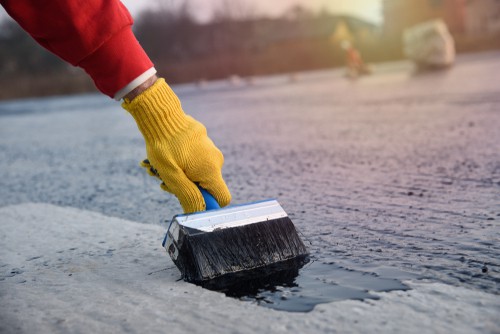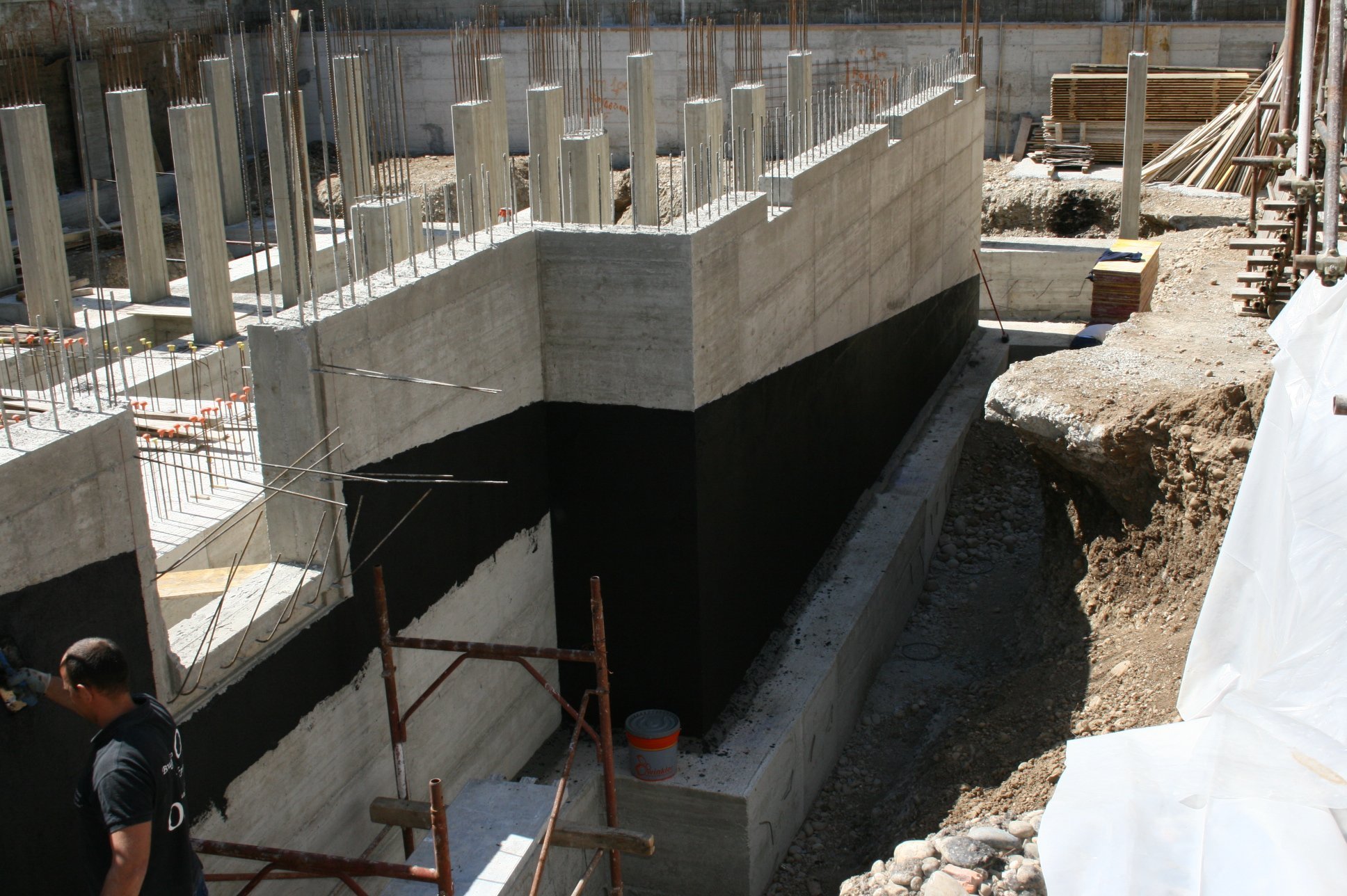Foundation waterproofing Omaha: The Long-Term Investment
Wiki Article
Types of Waterproofing: Checking Out the Different Techniques and Their Applications
Waterproofing is a crucial element of building and construction and upkeep. It shields structures from the detrimental results of water damage. There are numerous approaches readily available, each with its unique applications and benefits. From membrane systems to cementitious solutions, understanding these alternatives is important for reliable execution. The selection of waterproofing technique can considerably affect sturdiness and durability. Exploring these numerous strategies discloses their distinctive advantages and potential obstacles, prompting more consideration of optimal solutions.Membrane Layer Waterproofing Systems
Membrane layer waterproofing systems act as a vital barrier versus water breach in different frameworks. These systems usually contain thin sheets made from products like rubber, thermoplastic, or bitumen, which are used to surfaces to stop moisture penetration. They can be set up over or below grade and are specifically effective in areas susceptible to high water direct exposure, such as basements, roofings, and foundations.The installment process includes cleaning up the substratum, using adhesives or primers, and exactly fitting the membrane layer to assure complete coverage. Membrane layer systems can be either totally adhered, mechanically attached, or laid loose, depending upon the certain needs of the project. They use resilience and adaptability, accommodating architectural movements without endangering their waterproofing capacities. These systems can be enhanced with additional layers for enhanced protection. Ultimately, membrane waterproofing systems are important for guarding frameworks versus water damages and preserving long-lasting stability.Liquid-Applied Waterproofing Coatings
Liquid-applied waterproofing finishes give a functional remedy for shielding surface areas from water infiltration - Water Solutions. These coverings include fluid products that, when applied, form a smooth, versatile membrane. Their flexibility enables application on different substrates, consisting of concrete, steel, and wood. The coverings can be used in diverse environments, from household to commercial settings, making them ideal for roofings, foundations, and below-grade structures.One substantial advantage of liquid-applied coverings is their capacity to adapt to irregular forms and permeate cracks, producing a robust barrier versus wetness. They often show outstanding attachment residential or commercial properties and resistance to UV radiation, guaranteeing long life and toughness. Furthermore, the application procedure is normally simple, allowing for fast setup and decreased labor prices. This technique also lessens the risk of water pooling, as the continual layer properly routes water away from prone locations. In general, liquid-applied waterproofing layers are an efficient selection for comprehensive water defenseCementitious Waterproofing Solutions

Cementitious waterproofing solutions supply a robust choice for structures calling for reliable moisture defense. These systems mostly utilize a blend of concrete, sand, and chemical ingredients to create a water-proof obstacle. They are typically put on surfaces such as concrete walls, foundations, and floorings, giving a resilient, resilient protection against water intrusion.One of i was reading this the essential advantages of cementitious waterproofing is its convenience of application; it can be used using a brush, roller, or spray, making it suitable for different job dimensions. In addition, this method works with lots of surface areas and can usually be used combined with other waterproofing techniques.Cementitious services are specifically reliable in settings where water direct exposure is a concern, such as basements or below-grade structures. Their excellent adhesion buildings assure that they bond well with substratums, giving a solid and impermeable layer against wetness infiltration.
Bentonite Waterproofing
Bentonite waterproofing is a very effective approach that makes use of sodium bentonite clay to produce an all-natural obstacle against water. This technique makes use of the distinct residential or commercial properties of bentonite, which expands upon call with water, securing any type browse this site of prospective leaks and preventing dampness seepage. It is frequently utilized in various applications, consisting of structure walls, tunnels, and preserving walls, where water resistance is essential.Bentonite can be used in a number of forms, such as panels or coverings, supplying flexibility in installation. Its capacity to self-seal makes it an appealing option for locations based on shifting dirt or rising and falling water levels. In addition, bentonite waterproofing is eco pleasant, as it is a natural product that does not introduce damaging chemicals into the surroundings.Drainage and Exterior Waterproofing Equipments
Efficient waterproofing frequently entails a combination of methods, consisting of drain and outside systems. Drain systems, such as French drains pipes and sump pumps, are created to redirect water far from structures, lowering hydrostatic stress against structures. These systems are essential in avoiding water accumulation that can cause architectural damages and mold and mildew growth.External waterproofing, on the various other hand, involves using protective barriers to the structure's outside. Strategies such as the installation of water resistant membranes, coatings, or sealers can assist prevent water seepage. This technique not just safeguards the structure but also boosts the total toughness of the structure.Together, drainage and external waterproofing systems develop a complete remedy to manage water successfully. By applying these approaches, homeowner can guard their investments against the harmful effects of wetness, guaranteeing long-lasting stability and security for their buildings.Often Asked Concerns
Just how Do I Select the Right Waterproofing Method for My Task?
Selecting the right waterproofing approach relies on aspects such as job Related Site type, environmental problems, budget, and wanted durability. Evaluating these aspects enables for informed choices tailored to specific requirements and demands.
Can Waterproofing Be Applied in Cold Weather Condition Conditions?
Waterproofing can be used in winter conditions, but it requires details products and methods. Cold temperature levels might impact curing times and adhesion, requiring cautious selection of items developed for low-temperature application.
What Are the Usual Indicators of Waterproofing Failure?
Common indicators of waterproofing failure consist of noticeable water stains, peeling off paint, moist odors, mold growth, and fractures in walls or foundations. Foundation waterproofing Omaha. These indicators suggest that wetness is passing through the obstacle, compromising its effectivenessFor How Long Does Waterproofing Last Prior To Requiring Maintenance?
The long life of waterproofing differs, normally lasting in between 5 to 10 years. Elements such as worldly top quality, ecological conditions, and maintenance methods affect its durability, necessitating regular inspections to guarantee efficient defense versus water breach.Are There Eco-Friendly Waterproofing Options Available?
The concern of environment-friendly waterproofing options discloses an expanding interest in lasting products (French drain installation Omaha). Different natural materials, such as plant-based sealants and recycled items, offer effective remedies while reducing ecological impact, attracting ecologically aware consumersReport this wiki page